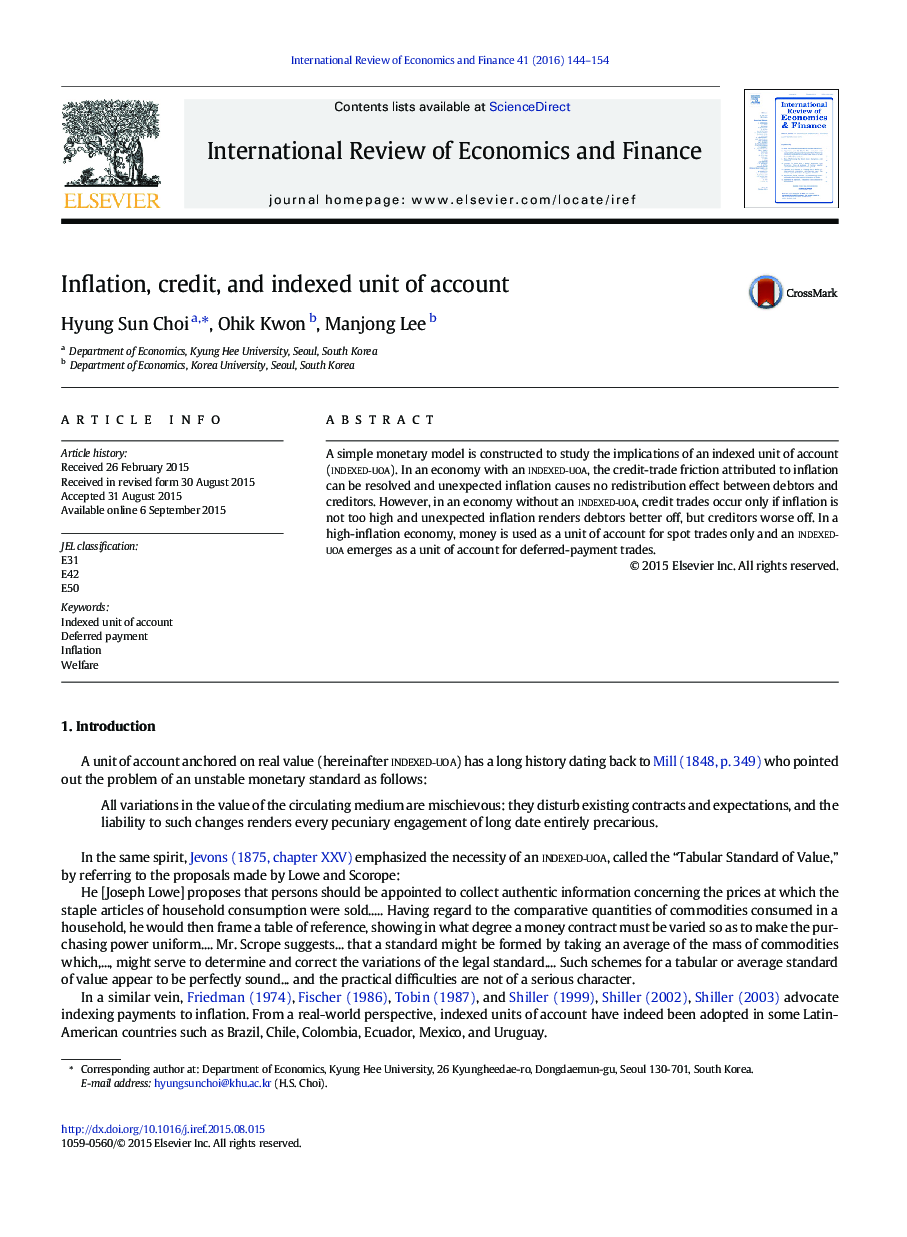| Article ID | Journal | Published Year | Pages | File Type |
|---|---|---|---|---|
| 5083241 | International Review of Economics & Finance | 2016 | 11 Pages |
â¢The nature of an indexed unit of account is investigated using a standard monetary model.â¢An indexed unit of account turns out to resolve credit-trade friction attributed to inflation.â¢Also, it removes the redistribution effect between debtors and creditors caused by unexpected inflation.â¢If inflation is low enough, money is used as a unit of account for even deferred-payment trades.â¢If inflation is high, an indexed unit of account emerges as a unit of account for deferred-payment trades.
A simple monetary model is constructed to study the implications of an indexed unit of account (Indexed-UoA). In an economy with an Indexed-UoA, the credit-trade friction attributed to inflation can be resolved and unexpected inflation causes no redistribution effect between debtors and creditors. However, in an economy without an Indexed-UoA, credit trades occur only if inflation is not too high and unexpected inflation renders debtors better off, but creditors worse off. In a high-inflation economy, money is used as a unit of account for spot trades only and an Indexed-UoA emerges as a unit of account for deferred-payment trades.
